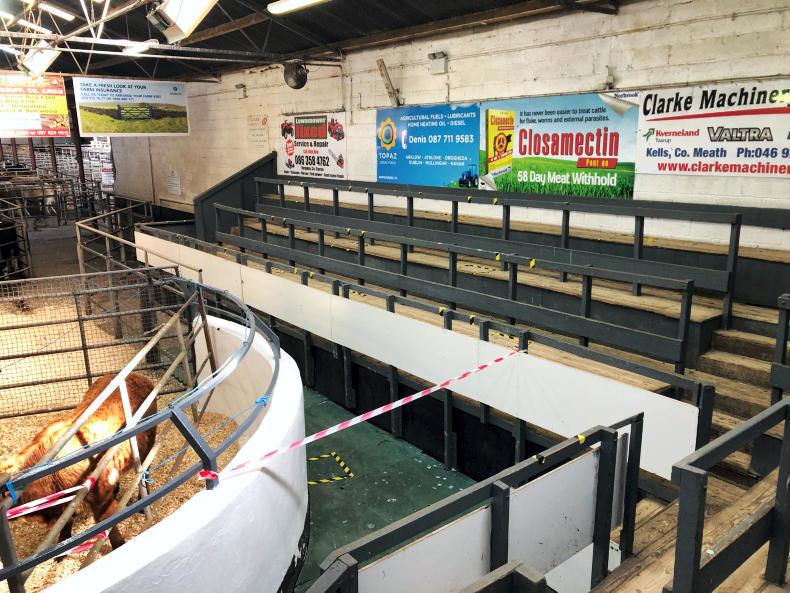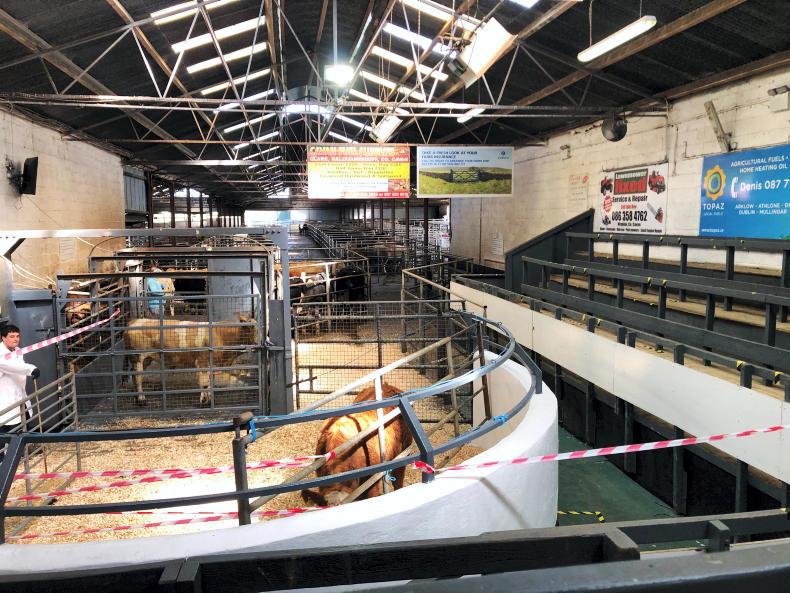Motorists on the old Kells to Virgina road would have barely noticed a sale taking place in Carnaross Mart in Co Meath on Monday, but there was one.
Around 150 lots of cattle – 100 males and 50 females – were sold completely online through the online sales platform Livestock Live.
The 100% online sale, the first of its nature in Ireland, was trialled by Carnaross Mart in an effort to continue trading while adhering to the restrictions and protocols that have been put in place for livestock marts in response to the coronavirus pandemic.
Speaking to mart manager Padraig McElroy, he said: “It will be great to get back trading cattle again. At the end of the day, we have to keep cattle moving.
"The virus is a very serious issue, but, not to make matters worse, it’s also going to be very important to keep food on the shelves too.”
The idea behind the online format is that cattle enter the sales yard and go around the ring as normal, except buyers and sellers bid online and view the animals in real time without having to be at the mart. An auctioneer takes bids and handles the sale as normal.
Format
On Monday morning, all animals were delivered to the mart and checked in as normal between 6am and 10am. The sellers dropped off the animals and these were assigned lot numbers and placed into pens.
Speaking to the auctioneer on the day Peter Gilsen, he said: “Around 30% of the sellers would have told us to ‘sell away at them’. Then others would have put a reserve price on the animal and more would have given us a general guideline of what they were after going by recent trade.”

From 10am, buyers were offered the chance to view the yard of cattle. However, this took place under stringent conditions, with a maximum of two buyers viewing lots at a time. There was a strict one-in-one-out policy in action and all personnel had to sign in, hand-sanitise and put on gloves before entering.
Viewing access finished at 11.30am and the sale went live online at noon.
Online
To view the live stream and to trade cattle on the day, all buyers and sellers had to be registered with Carnaross Mart and, in turn, with the Livestock Live sales platform.
A catalogue list of all lots for the day was available to view on the virtual mart catalogue too.
As the sale got under way, it was business as usual inside the ring - except there wasn’t a single person standing outside it.
Animals were weighed and, as they entered the ring, all of the information which would normally be available and seen on the display board in the mart was instead displayed on the virtual mart board online.
As the bids came through in real-time, the auctioneer called the bids in typical fashion and the animal was sold (subject) to the highest bidder.
The seller could accept this price online or the mart would get in touch via phone.
Some buyers who would not have been comfortable operating the technology opted to place bids on the morning of the sale, which the auctioneer declared as ‘book bids’.

Obviously, the risk with technology is faults and technical glitches. There were two early technical stoppages. However, both were rectified quite quickly and thereafter the sale moved along well, despite some more very minor delays.
In the first hour, about 30 lots were sold.
Speaking to mart owner James Mallon, he said: “It’s a new way of doing things and there are always going to be teething problems with the technology at the start, but it’s very positive to see it operating and I’m sure it can improve too.”
Trade
Despite the new format, trade didn’t suffer, with good-quality lots still fetching prices close to those recorded before the shutdown of marts. For a full report on trade, including pictures, see this week’s Irish Farmers Journal.






 This is a subscriber-only article
This is a subscriber-only article









SHARING OPTIONS: